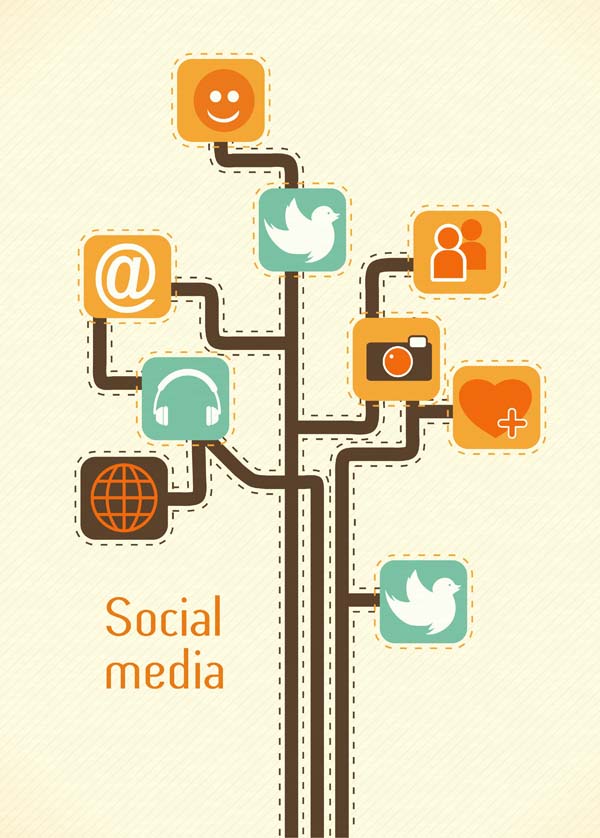
10 Reasons Why Your Website Is Pushing Singapore Customers Away (Part 2)
October 2, 2025
How To Use Infographics To Generate More Sales Leads
October 2, 2025
It has been said about the “butterfly effect” in business context that a small improvement can bring about big results. How would you like to discover better ways to drive traffic, generate leads and engage with your subscribers and followers? Here are some optimizations tips you can implement on your social media channels.
Use the Proper Image Dimensions for Social Profiles and Posts
- Pay attention to the dimensions of the images you’re uploading and sharing. Follow the recommended image dimensions (in pixels) that the social networks provide.
- Ensure your social profiles showcase your brand and business in the best possible light.
- Here’s the list of dimensions for Facebook, Twitter, LinkedIn, Google+, Pinterest and YouTube graphical covers. All dimensions are given as width × height.
- Cover photo: 851 × 315
- Profile picture: 160 × 160 (upload as 180 × 180)
- App icons: 111 × 74
- Timeline: 504 × height is up to you (shared image), 484 × 252 (shared link)
- News feed: 470 × 394 (shared image), 470 × 246 (shared link)
- Header image: 1252 × 626, 1500 × 500 (redesign)
- Profile picture: 250 × 250
- Image in feed: 1024 × 512
- Banner image: 624 × 220
- Logo: 100 × 60
- Link Thumbnail: 100 × 100
Google+
- Cover photo: 1010 × 608 (recommended), 480 × 270 (minimum), 2120 × 1192 (maximum)
- Profile picture: 250 × 250
- Image post: 4:3 aspect ratio (800 × 600 minimum)
- Board cover: 217 × 147
- Preview image: 51 × 51
YouTube
- Banner image: 2560 × 1440 (TV), 2560 × 423 (desktop), 1546 × 423 (mobile)
{{cta(‘1c4663c1-3307-4975-9757-49f7f08ef460’)}}
Test Post Frequency to Find Your Sweet Spot for Each Network
Dan Zarrella, a fellow HubSpotter, used 2 years worth of data to figure out the optimal post frequencies for Facebook and Twitter. The data showed that for Facebook, posting once every two days was the optimal frequency for generating ‘Likes’. As for Twitter, tweeting between 1 and 4 times per hour proved to be the most effective frequency as determined by the average click-through rates of tweeted links.
Keep in mind that your ideal posting frequency will depend on how many overall posts are filling the feeds of your social followers and subscribers.
Here’s a simple approach for determining your optimal post frequencies. First, for each network you’re testing, schedule your posts apart by 2 hours and stick to that posting frequency for a week. At this point, ensure to keep an eye on your key social metrics (likes, shares, click-through rates, leads generated, etc.).
The following week, reduce the buffer time between your posts to an hour and a half, and see if (and how) that reduction in post frequency affects your metrics. Continue to reduce the buffer time between your scheduled posts week over week. Through some simple analysis, you can improve on the post frequencies that maximize the metrics you want to optimize for.
Figure Out The Best Times To Post
Besides testing your post frequency, it is essential to do some testing to figure out your ideal posting times.
For a start, open up your social media publishing tool and sort your past posts by the number of clicks they have received. By scrolling through this list, you should be able to identify any prominent trends related to post timing. For example, if you see that seven of your top ten most-clicked LinkedIn posts were shared between 1 p.m. and 2 p.m., that’s a good indication that 1 p.m. – 2 p.m. is your LinkedIn posting “sweet spot”.
However, keep in mind that clicks don’t equal customers. To understand the impact of your post timing, you will need a social media publishing tool that can communicate directly to your database of contacts. This connection between your publishing tool and your database will allow you to focus your efforts and figure out ideal post times for engaging existing leads and customers, and not just your audience at large.
Integrate Social Media With Your Other Marketing Channels
- Add Google Authorship to your blog
Google Authorship ties your Google+ profile to your blog posts, which allows Google to display information (e.g. your name, profile image, and the number of circles you are in) next to your posts when they appear in search engine results pages (SERPs). Many marketers have found it has a positive effect on click-through rates and page views.
- Incorporate social sharing and follow buttons into your emails and “thank you” pages
By incorporating social buttons into your emails, you can help drive more opens, click-throughs, and conversions. You can make it clear to your contacts that there are other places where they can engage with you on the web (e.g. Facebook, Twitter, LinkedIn etc.).
“Thank you” pages are another easy-to-overlook location where adding social buttons can make a difference. These are the pages where people actually download or access your content after filling out one of your landing pages.
With these tips, revise your online marketing practices and see if there is a way to improve them so as to generate more leads! On top of optimizing your social media channels, you can also incorporate the use of social media management tools.
{{cta(‘377e5a1e-5e51-4f92-afe1-66911d82584c’)}}


